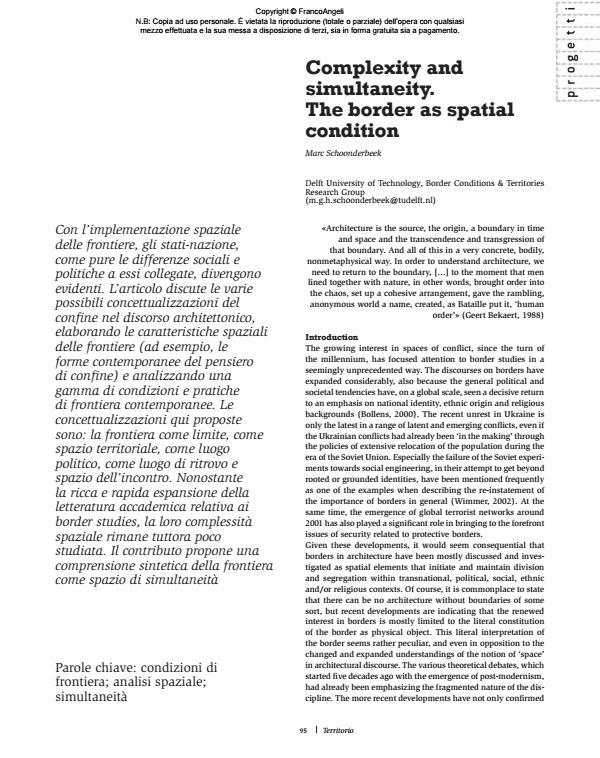Complexity and simultaneity. The border as spatial condition
Titolo Rivista TERRITORIO
Autori/Curatori Marc Schoonderbeek
Anno di pubblicazione 2015 Fascicolo 2015/72
Lingua Inglese Numero pagine 6 P. 95-100 Dimensione file 252 KB
DOI 10.3280/TR2015-072015
Il DOI è il codice a barre della proprietà intellettuale: per saperne di più
clicca qui
Qui sotto puoi vedere in anteprima la prima pagina di questo articolo.
Se questo articolo ti interessa, lo puoi acquistare (e scaricare in formato pdf) seguendo le facili indicazioni per acquistare il download credit. Acquista Download Credits per scaricare questo Articolo in formato PDF

FrancoAngeli è membro della Publishers International Linking Association, Inc (PILA)associazione indipendente e non profit per facilitare (attraverso i servizi tecnologici implementati da CrossRef.org) l’accesso degli studiosi ai contenuti digitali nelle pubblicazioni professionali e scientifiche
Con l’implementazione spaziale delle frontiere, gli stati-nazione, come pure le differenze sociali e politiche a essi collegate, divengono evidenti. L’articolo discute le varie possibili concettualizzazioni del confine nel discorso architettonico, elaborando le caratteristiche spaziali delle frontiere (ad esempio, le forme contemporanee del pensiero di confine) e analizzando una gamma di condizioni e pratiche di frontiera contemporanee. Le concettualizzazioni qui proposte sono: la frontiera come limite, come spazio territoriale, come luogo politico, come luogo di ritrovo e spazio dell’incontro. Nonostante la ricca e rapida espansione della letteratura accademica relativa ai border studies, la loro complessità spaziale rimane tuttora poco studiata. Il contributo propone una comprensione sintetica della frontiera come spazio di simultaneità
Parole chiave:Condizioni di frontiera; analisi spaziale; simultaneità
- Spatial Appropriations Over Europe’s Borderland: El Principe’s Growth as a Vestige of Colonial Urbanism Mari Paz Agundez, in Urban Planning 6942/2024
DOI: 10.17645/up.6942
Marc Schoonderbeek, Complexity and simultaneity. The border as spatial condition in "TERRITORIO" 72/2015, pp 95-100, DOI: 10.3280/TR2015-072015